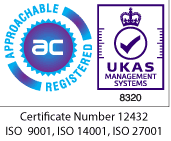Taking bold steps forward
Scale up using market intelligence from advisors who know the risks
Successfully entering new markets or developing new products isn’t about having a plan; it's about having the right plan for your environment. Your strategy must efficiently channel your resources, target the perfect audience, and position your new product to address the market and customer expectations.
At Cambridge Management Consulting, we are passionate about driving your business to unparalleled heights. Our key strength is the ability to combine a range of services to fit your needs, including strategy, product design, innovation, sales and marketing, channel distribution, procurement, investment services and many more.
We are experts at taking new ideas to MVP and beyond
Our approach isn't generic; it is finely tailored to connect with your customers and overcome barriers in your market landscape.
Our dynamic team fuses creativity with data, and gives you access to a global network of partners who can give you the competitive edge required to successfully break down the door to new markets.
Services
New Market Entry
We focus on risk assessment, competitive landscape analysis, and customer targeting. Ensure your venture into new markets is based on the latest market intelligence, and your strategy is optimised for success.
Customer Targeting
We uncover your brand's unique value proposition and position this offer by researching your target audience using advanced analytics, market segmentation, and consumer behaviour insights.
Market Sizing & Segmentation
Using a comprehensive analysis of market dynamics, consumer trends, and competitive landscapes, we equip you with vital insights to define the size and scope of your target markets while identifying distinct customer segments for tailored marketing.
Route to Market - Design & Optimisation
We tailor a route-to-market strategy that streamlines your Go-to-Market approach, reducing costs and maximising reach, thereby securing a competitive edge in your market.
Sales Acceleration
By diagnosing barriers to sales effectiveness and aligning sales processes with buyer behaviours, we ensure that your sales strategy is not just efficient but also highly responsive to market dynamics and customer needs.
Sales & Marketing Transformation
This service not only enhances the efficiency and effectiveness of your sales and marketing teams, but also fosters a culture of collaboration, ensuring that every campaign and interaction is precisely targeted for impact.
Want to know more?
Our outcome-driven, pragmatic approach will provide direct feedback and practical strategies to help leaders and teams better understand their role and purpose.
We give actionable advice on the best way to communicate your strategy, gaining buy-in across all levels of your organisation and building the momentum for success.
Strategy in Numbers
95%
Number of employees who say they don't understand their company's strategy
48%
Of organisations fail to meet half of their strategic actions
60%
Of organisations do not tie financial budgets to strategic priorities
“Cambridge MC understand what we are doing as a business, and why it's critically important; they share our passion and motivation for sustainable change in infrastructure. I look forward to a fruitful partnership.”
Mark Bjornsgaard, Founder and CEO of Deep Green Technologies
Industry insights



Stuart Curzon
Managing Partner - Sales Strategy
Stuart is a Managing Partner and the Chief Commercial Officer (CCO). In addition to running the global sales operations for Cambridge MC, Stuart and his team work closely with our clients to scale their go-to-market strategy, increase market penetration, and transform sales and marketing to improve product mix, revenue growth, and profitability.
For the past 20 years Stuart has focused on building effective teams, primarily targeting Global 5000 enterprise clients in ICT and telecommunications. Stuart is an accomplished and versatile leader who excels at restructuring, expanding, and merging cross-regional teams. He is particularly experienced at managing geographically and culturally dispersed teams that deliver sales and marketing functions in different locations and marketplaces.
Stuart is a renowned and experienced senior executive, having expanded Verizon's services in EMEA and also held senior roles in Reliance (now Global Cloud Exchange (GCX)), NTT, Microsoft and Compaq.
Our team can be your team
Our team of experts have multiple decades of experience across many different business environments and across various geographies.
We can build you a specialised team with the skillset and expertise required to meet the demands of your industry.
Our combination of expertise and an intelligent methodology is what realises tangible financial benefits for clients.
Our Strategy Experts
Jeff Owen
M&A Lead
A highly-experienced COO/Operations Director, board member, and consultant in the Telco sector, Jeff holds an impressive track record of creating scalable operational infrastructure to drive profit from commercial activities with Six Sigma methodologies.









